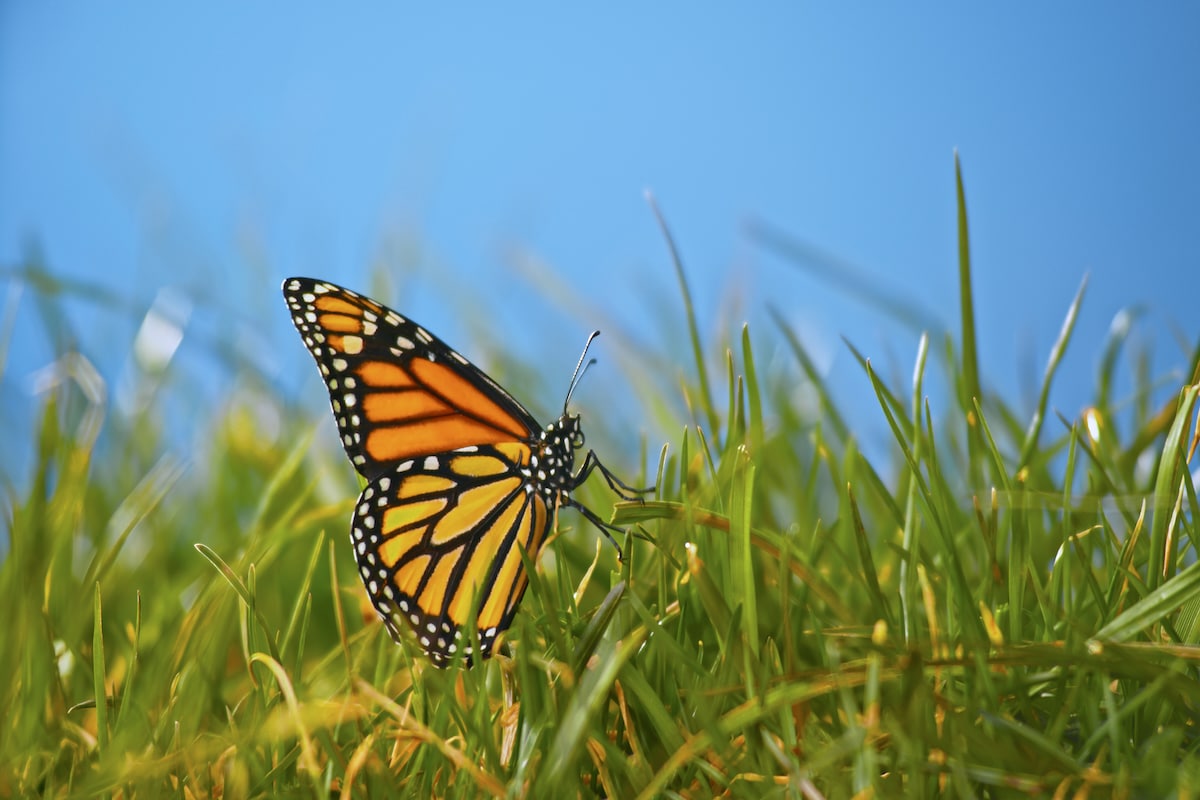Ecowatch
Letting Your Grass Grow Wild Boosts Butterfly Numbers, UK Study Says

Butterflies benefit when grass grows long, researchers say. simonkr / iStock / Getty Images Plus

Why you can trust us
Founded in 2005 as an Ohio-based environmental newspaper, EcoWatch is a digital platform dedicated to publishing quality, science-based content on environmental issues, causes, and solutions.
Have you ever noticed that meadows of long grass seem to be teeming with butterflies, bumble bees, beetles, crickets and other insects? Meanwhile, short-cropped, bright green lawns appear devoid of critters in comparison.
A six-year study of butterfly sightings in 600 gardens in the United Kingdom has confirmed that letting your lawn grow wild can significantly increase butterfly and moth numbers.
“Nature is in crisis; 80% of butterflies have declined since the 1970s, so we need to take action now to protect them. We wanted to be able to give tried and tested gardening advice that will benefit butterflies as we know lots of people want to help. This study proves, for the first time, that allowing a patch of grass to grow long will attract more butterflies into your garden,” said Dr. Richard Fox, co-author of the study and head of science at UK nonprofit Butterfly Conservation, in a press release from the charity.
Fox and fellow Butterfly Conservation researcher Dr. Lisbeth Hordley found that letting long grass in your garden grow can boost butterfly numbers by as much as 93 percent, while attracting a greater variety of species.
The researchers were assisted in their Garden Butterfly Survey by citizen scientists throughout the UK.
The biggest benefits to garden rewilding were found in intensively farmed areas and urban spaces. Gardens with long grass in highly arable areas had as much as 93 percent more butterflies, while urban landscapes saw an increase of 18 percent.
“The potential to provide wild spaces for butterflies and moths to thrive is huge. Gardens make up more than 728,000 hectares in Great Britain — the equivalent of over a million football pitches. If each of these gardens had a space that was allowed to go a little wild, with grass growing long, it would make a huge difference for butterflies and moths, providing spaces for them to feed, breed and shelter,” Butterfly Conservation advised.
The study looked specifically at gardens, but the benefits of wild spaces and long grass for butterflies are likely applicable to other green spaces like parks, small fruit and vegetable patches, the grounds of schools and strips of grass and vegetation between sidewalks and roadways. These areas could become important wildlife refuges if allowed to flourish.
“The simple act of creating wild spaces by allowing a patch of grass to grow long, or a border edge to go wild is free and easy to do, and can significantly boost butterfly numbers, especially in urban and agricultural settings where they are most under pressure. The benefits of each individual wild space are small, but if thousands of people get involved the boost to butterflies could be huge,” Fox said in the press release.
The study was published in the journal Science of the Total Environment.
Fox and Hordley found that flowering ivy in particular increased populations of specific butterfly species like Red Admiral, Comma and Holly Blue, which breed in ivy habitat and use it as a source of nectar.
They also discovered that long grass attracts more species with caterpillars who eat grasses, including gatekeepers, meadow browns, speckled woods, small skippers and ringlets, reported The Guardian.
Fox said this pointed to population increases not being just from the availability of wildflower nectar found in the grasses, but because the butterflies were seeking out or breeding in lawns that had been allowed to grow.
“It’s a really positive sign,” Fox said, as The Guardian reported. “What people are doing with long grass in gardens is creating potential or actual breeding habitat. In order to make an impact on the biodiversity crisis we need to be creating places where butterflies and other wildlife can breed. This is simple, doesn’t cost anything and saves you time and effort. If you have a patch of long grass you may have grasshoppers, beetles and ant hills as well – there will be all these spinoffs.”
Butterfly Conservation has a goal of transforming 100,000 areas in the UK to help butterfly populations through its Wild Spaces initiative.
The wildlife nonprofit is asking everyone to support butterfly and biodiversity recovery by creating their own wild spaces, whether large or small. These can be on patios, terraces and balconies or in gardens and shared local spaces.
“Whether you have a large garden, a small patch of grass, a community or school space, or a balcony or window box, anyone, anywhere can help. We hope that our Wild Spaces programme will inspire people across the UK to take action and help to create a national network of butterfly-friendly habitats,” Fox said in the press release.
Subscribe to get exclusive updates in our daily newsletter!
By signing up, you agree to the Terms of Use and Privacy Policy & to receive electronic communications from EcoWatch Media Group, which may include marketing promotions, advertisements and sponsored content.
Source
Disclaimer: No copyright infringement intended. All rights and credits reserved to respective owner(s).












